#egyptian antiquity
Text

Arguably one of the most famous Ancient Egyptian deities recognized in the modern world, Anubis (jnpw), known to the Egyptians as Anpu, is an icon of the ancient world. From books to movies, his likeness still remains a favourite, and he is recognized worldwide, often springing to mind when Ancient Egypt is mentioned in entertainment or even in passing conversation.
Even those least knowledgeable on Ancient Egyptian history are aware of his image; the famous black jackal headed man or full-bodied jackal laying proudly like a sphinx has been etched in the human psyche, and he remains a symbol of Egypt past and present.
Since the earliest days of Ancient Egypt, Anubis was a protector of the dead, guide of the Underworld, protector of graves and the god of embalming.
It is thought that the jackal became associated with death due to their roaming presence around the Pre Dynastic cemeteries and burial sites. It is thought that the idea of the jackal being a protective deity for the dead came from this. It is easy to believe that a roaming pack of wild dogs warning off grave robbers or perhaps delinquent spiritual entities became rather comforting to those mourning their loved ones. However, this is of course impossible to know and is conjecture at best.
Despite Anubis being depicted more often than not with his jackal form, be it full bodied or head alone, there is a rare glimpse of Anubis in human form that appears within the Temple of Ramesses II at Abydos. In this wonderful photograph taken by Manna4u at flickr, you have a wonderful, high quality glimpse at an absolutely rare depiction of the god Anpu/Anubis.
Anubis firmly stands in pop culture as the jackal headed god, yet recent studies have somewhat shaken this idea, as DNA analysis of the Egyptian Jackal, actually proves their species descends from the wolf, and is of the gray wolf family.

#ancient egypt#kemet#egyptian mythology#egyptian gods#ancient history#egyptian antiquity#Anpu#Anubis
86 notes
·
View notes
Text
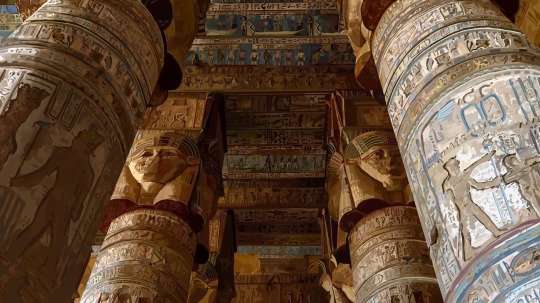
I know this isn't ninjago guys but I finished this 17 hour painting for my art class and I was proud of it so...enjoy.
I love Egypt fun fact about me. :)
[ID: a detailed, realistic painting of the hathor columns at the dendera temple complex in dendera, egypt. /end ID]
#my art#art#egypt#egyptian#egyptology#egyptian art#ancient egypt#antiquity#ancient art#ancient egyptian#painting#digital painting
140K notes
·
View notes
Text
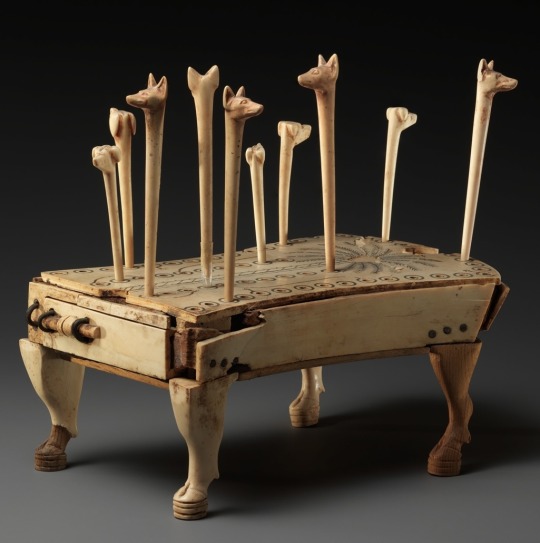
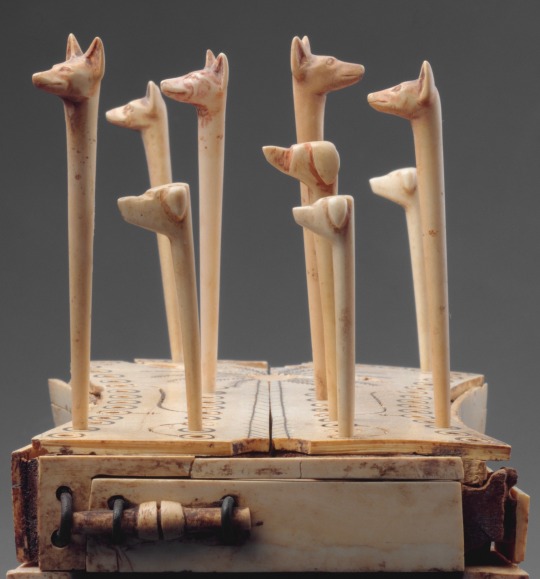
Egyptian
Game of Hounds and Jackals
Middle Kingdom, ca. 1814-1805 B.C.E.
#egyptian art#ancient egypt#ancient art#hounds and jackals#ancient history#artifact#antiquities#ancient people#ancient culture#egyptian history#egyptian culture#board games#chess#aesthetic#beauty#art history#aesthetictumblr#tumblraesthetic#tumblrpic#tumblrpictures#tumblr art#tumblrstyle#artists on tumblr#ancient artifacts
5K notes
·
View notes
Text

Egyptian cat amulet for your viewing pleasure :3
Image: Cat Amulet. 664–525 B.C. Faience, blue, H. 1.8 × W. 0.7 × D. 1.2 cm (11/16 × 1/4 × 1/2 in.). Cat Amulet [08.202.41c]. The Metropolitan Museum of Art.
641 notes
·
View notes
Text

Frank Xavier Leyendecker, Life Magazine cover, The Flapper, 2. February 1922
#Frank Xavier Leyendecker#illustration#flapper#the flapper#1922#life magazine#cover#cover art#life magazine cover#1922 illustrations#f. x. leyendecker#Leyendecker#february#February issue#1920s#20s#20s illustrations#20s covers#antique#vintage#fashion#fashion illustration#20s headpiece#headpiece#headgear#butterfly#butterflies#art deco#egyptian#egyptian revival
511 notes
·
View notes
Text


Amethyst figurine of the goddess Taweret, Egypt, 18th Dynasty, 1500-1392 BC
from Phoenix Ancient Art
1K notes
·
View notes
Text


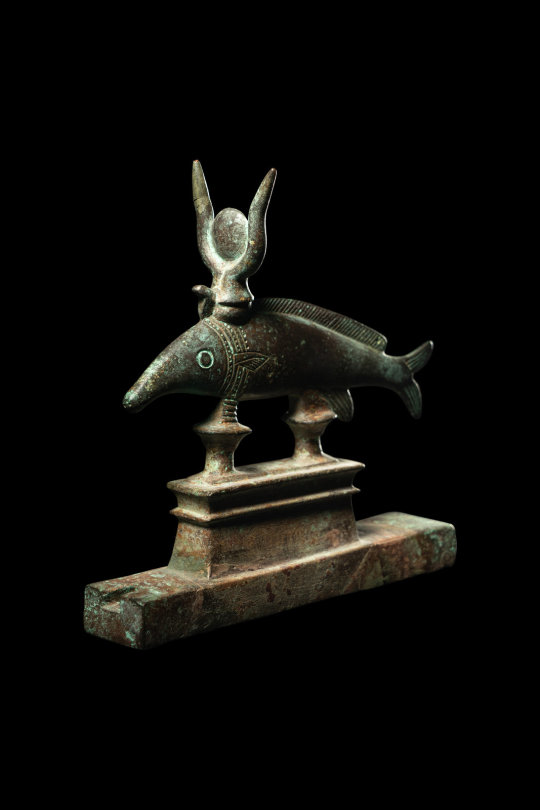

An Egyptian Bronze Oxyrhynchus Fish
Late Period, 26th-30th Dynasty, 664-343 B.C.
#An Egyptian Bronze Oxyrhynchus Fish#Late Period#26th-30th Dynasty#664-343 B.C.#bronze#bronze sculpture#ancient bronze#ancient artifacts#archeology#archeolgst#history#history news#ancient history#ancient culture#ancient civilizations#ancient ebypt#egyptian history#egyptian antiquities#egyptian art
358 notes
·
View notes
Text
2,000-Year-Old Fayum Portraits from Roman Egypt: also known as "mummy portraits," these funerary paintings were often fastened to the coffins of the people they depicted
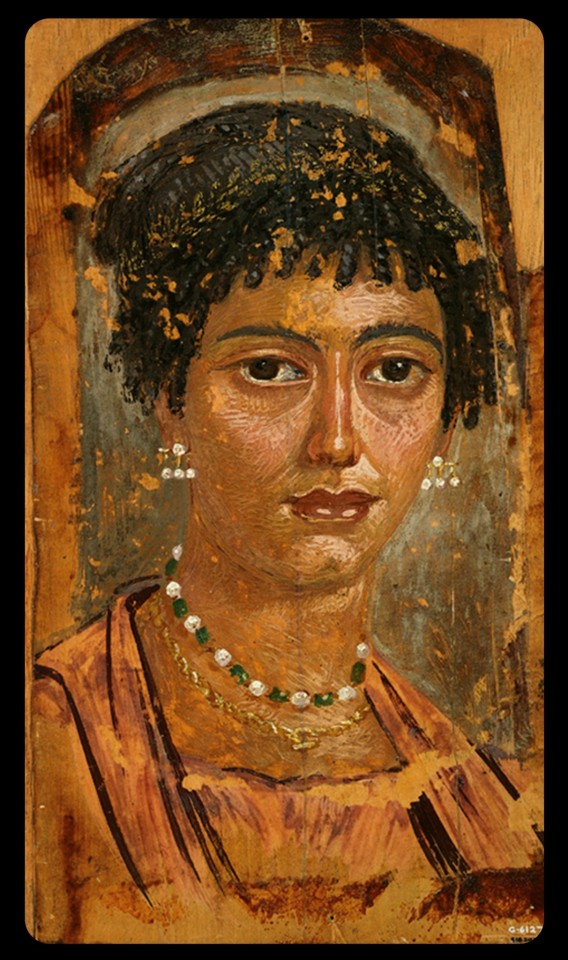
Above: Fayum portrait of a woman from Roman-occupied Egypt, c.100-110 CE
Fayum portraiture was a popular funerary practice among the upper-class families of Roman Egypt from about 50 CE to 250 CE. Given the high mortality rates for children during this period, many of these portraits depict children and youths, but adults were often featured, too.
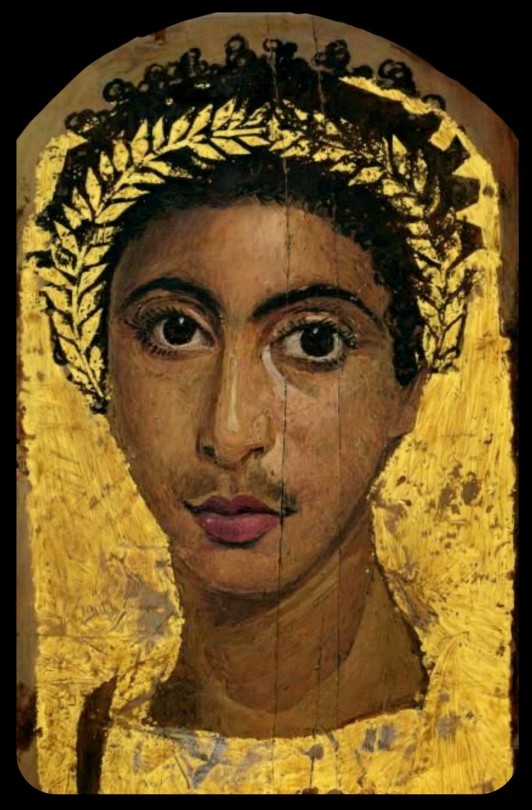
Above: portrait of a youth wearing a golden wreath, c.130-150 CE; the wreath and the background of the portrait are both gilded
The population of the Faiyum Delta, where most of these portraits were found, largely contained individuals with both native Egyptian/North African and Greek heritage. The Greek lineages can be traced back to the Ptolemaic period, when the Greeks gained control of Egypt and began to establish settlements throughout the region, gradually leading to a cultural diffusion between the Greek and Egyptian populations. The Romans eventually took control of Egypt in 31 CE, absorbing it into the Roman Empire and colonizing much of North Africa, but the demographics of the Faiyum Delta remained largely unchanged.

Above: portrait of a man with a mole on his nose, c.130-150 CE
Many of these Fayum portraits reflect the same blend of ethnic and cultural roots, depicting individuals with both Greek and native Egyptian heritage (a claim that is supported by both archaeological and genetic evidence). Some portraits may also depict native Egyptians who did not have any European ancestry, but had been integrated into Greco-Roman society.

Above: portrait of a bearded man, c.170-180 CE
These representations of native Egyptians provide us with unique insights into the actual demographics of Roman-occupied Egypt (and the ancient world at large). Non-European peoples are rarely included in depictions of the classical world; it's also interesting to see the blend of cultural elements that these portraits represent.

Above: portrait of a priest of Serapis, c.140-160 CE; the man in this portrait is shown wearing a fillet/crown that bears the seven-pointed star of the Greco-Egyptian god, Serapis
As this article explains:
In the 1800s and early 1900s, Western art historians didn’t know what to make of these portraits. Scholars of Roman history labeled them Egyptian. Scholars of Egyptian history labeled them Greco-Roman. These binary academic classifications failed to capture the true complexity of the ancient (or, indeed, modern) Mediterranean. In reality, Fayum portraits are a syncretic form, merging Egyptian and Greco-Roman art and funerary practices. They reflect the cosmopolitanism of both Roman and Egyptian history.
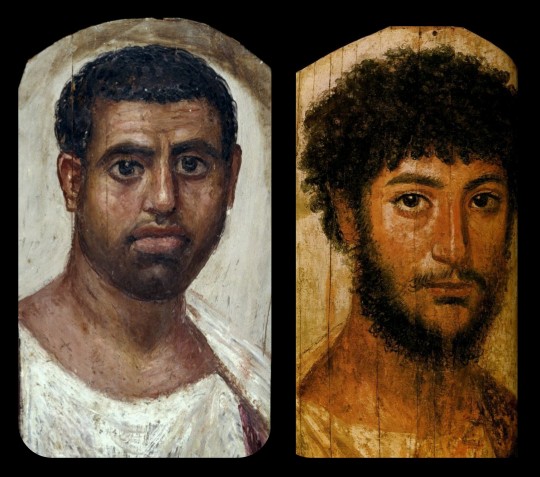
Above: portrait of a man, c.80-100 CE (left); portrait of a bearded officer, sometimes referred to as "Perseus," c.130-175 CE (right)
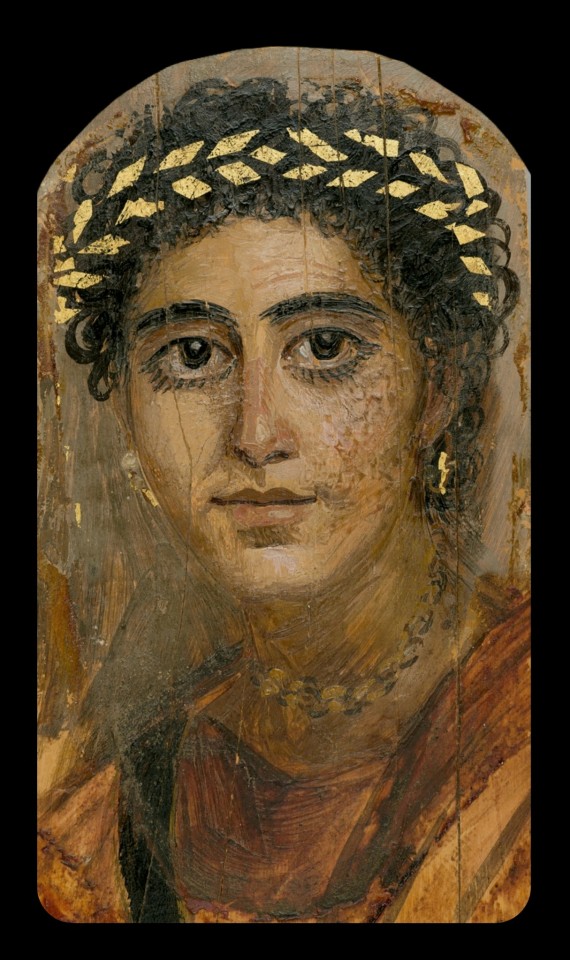
Above: portrait of a young woman in red, c.90-120 CE
Nearly 1,000 of these portraits are currently known to exist.
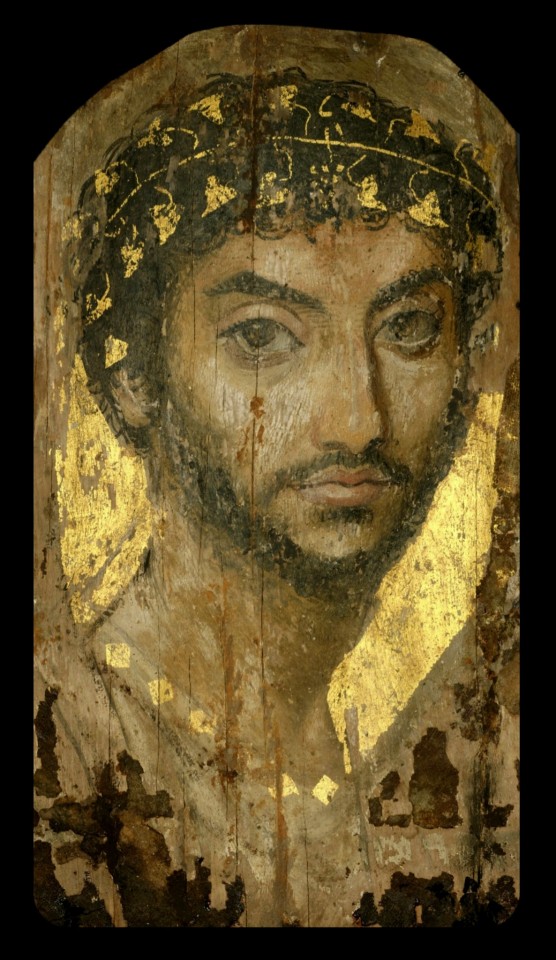
Above: portrait of a man wearing a gilded ivy wreath, c.100-150 CE
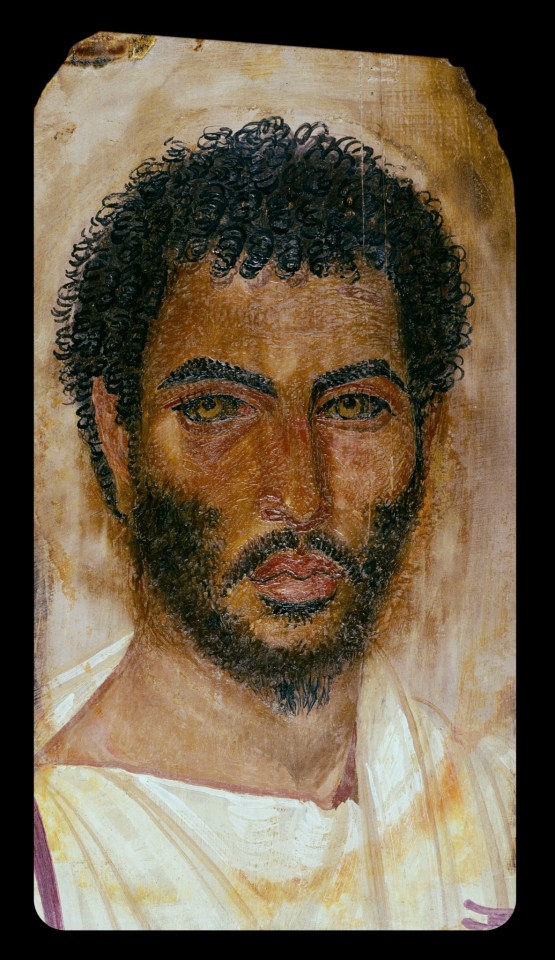
Above: portrait of a bearded man, c.150-170 CE
Sources & More Info:
Curationist: Fayum Portraits
Harvard Art Museums: Giving the Dead their Due: an Exhibition Re-Examines Funerary Portraits from Roman Egypt
Getty Museum: APPEAR Project
Getty Museum: Faces of Roman Egypt
National Geographic: Ancient Egypt's Stunning, Lifelike Mummy Portraits
The Athens Centre: The Myth of Whiteness in Classical Sculpture
Forbes: Whitewashing Ancient Statues: Whiteness, Racism and Color in the Ancient World
#archaeology#artifact#anthropology#history#ancient history#art#fayum portraits#roman egypt#ancient rome#ethnography#painting#portrait#north africa#people of color#egypt#religion#greco roman#greek#classical antiquity#fayum#mummy portraits#romano egyptian#representation
223 notes
·
View notes
Text





#museum#history#my photos#news#historic#costly#egypt#cairoegypt#egyptian#art#antiquities#my post#antiquité#cairo
98 notes
·
View notes
Text

#ancient egypt#cleopatra#egypt#egyptian#egyptian aesthetic#egyptian antiquities#egyptian art#egyptian royalty#eqyptian architecture#queen of egypt#cleopatra makeup#cleopatra worship#cleopatra aesthetic#egyptian scarab#egyptian pharaoh#egyptian cats#egyptian statue#egyptian jewelry#egyptian cat#egyptian pyramids#ancient egyptian#scarab#khepera jewelry#khepera#turquoise#turquoise scarab#turquoise khepera#Egyptian beetle
194 notes
·
View notes
Text
Fun fact: Unlike most other ancient pantheons, the Nordic Gods have exactly zero instances of direct familial incest

#nonask#denmark#admiralen#fact#nordic gods#norse gods#norse is an antiquated term that should not be used#but the rest of the world hasnt really discovered that so im putting it in the tags#anyway#shoutout to the following:#ancient greek gods#lookin at you zeus#ancient egyptian gods#ancient kemet#most of the old roman gods also#sumerian gods#babylonian gods#all of the mesopotamian deities basically#also i believe ancient chinese gods#and ancient japanese gods most definitely#i mean most of them didnt have much choice true#but some of them DID have options#they just chose not to make use of them#so good work nordic gods for keeping up that genetic diversity
219 notes
·
View notes
Text
"The country's ancient rulers are referred to today as "pharaohs," although in ancient times they each used a series of names as part of a royal titular, wrote Ronald Leprohon, a professor emeritus of Egyptology at the University of Toronto, in his book "The Great Name: Ancient Egyptian Royal Titulary" (Society of Biblical Literature, 2013). The word pharaoh originates from the Egyptian term "per-aa," which means "the Great House," Leprohon wrote. The term was first incorporated into a royal title during the rule of Thutmose III (reign circa. 1479 to 1425 B.C.), Leprohon wrote."
6 notes
·
View notes
Text
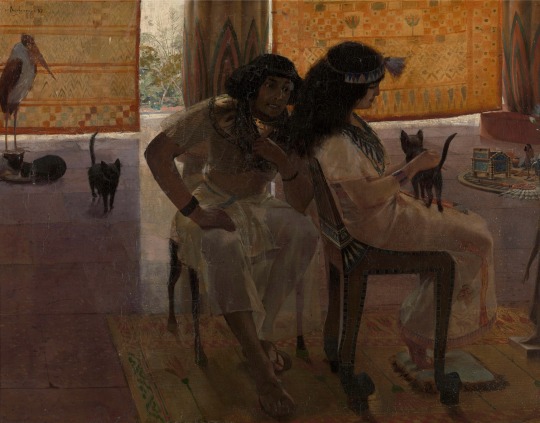
The Age of the Pharaohs by Georges Rochegrosse
#georges rochegrosse#art#ancient egypt#ancient egyptian#pharaoh#pharaohs#egypt#egyptian#history#ancient world#antiquity#cats#cat#animals#north africa
138 notes
·
View notes
Text


Egyptian
Sphinx of Amenhotep IlI, (possibly from a Model of a Temple)
New Kingdom, ca. 1390-1352 B.C.E.
#egypt#egyptian art#egyptian history#sphinx#ancient art#ancient egypt#ancient history#ancient people#artifacts#antiquities#ancient culture#ancient aesthetic#aesthetic#beauty#statue#art history#aesthetictumblr#tumblraesthetic#tumblrpic#tumblrpictures#tumblr art#tumblrstyle#artists on tumblr
1K notes
·
View notes
Text
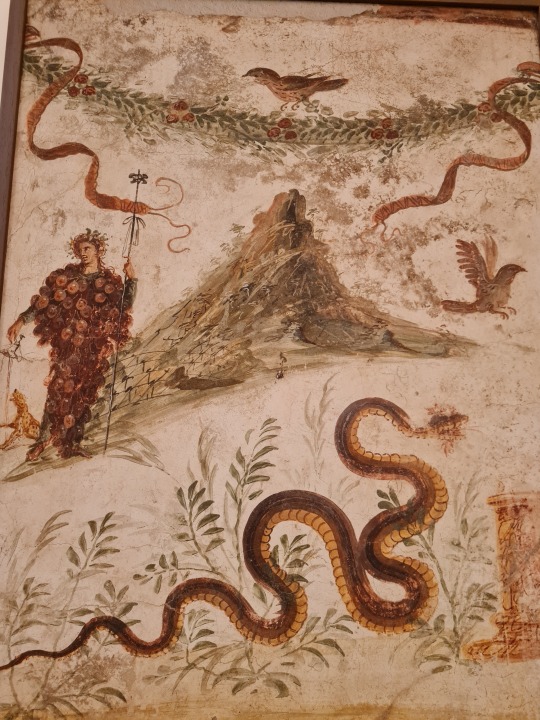

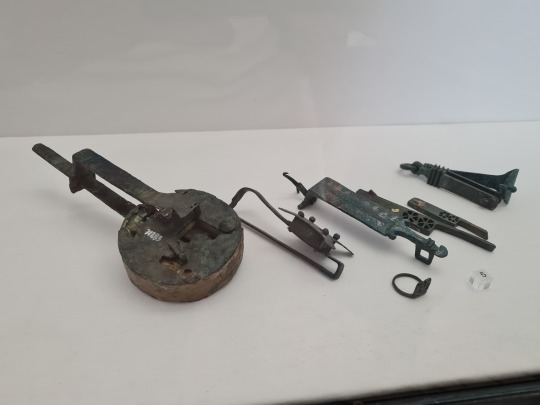

Artifacts of Pompeii, in Museo Archeologico Nazionale di Napoli
1. Fresco of Bacchus and Mount Vesuvius.
2. Roman amphora with cupids and Dionysian harvesting.
3. Roman padlock, fibula and other tools.
4. Fresco of Serapis between two cobras, from the Temple of Isis.
#pompeii#ancient history#roman art#antiquity#ancient art#ancient rome#archeology#roman empire#napoli#naples#italy#italia#italytravel#art history#history#museum#fresco painting#ancient#amphora#bacchus#dionysos#egyptian gods#gods#mythology#greek mythology#roman mythology#museum photography#art museum#travel#travel photography
70 notes
·
View notes
Text
Hey. Don't cry. Ancient Egyptian jerboa figurines from ca. 1850 BC, ok?

#i was supposed to be writing a paper but I um. got distracted#by scrolling through 329 pages of the met's ancient egyptian collection to be specific#egypt#ancient egypt#antiquity#egyptology#stuff and things#artifacts
115 notes
·
View notes